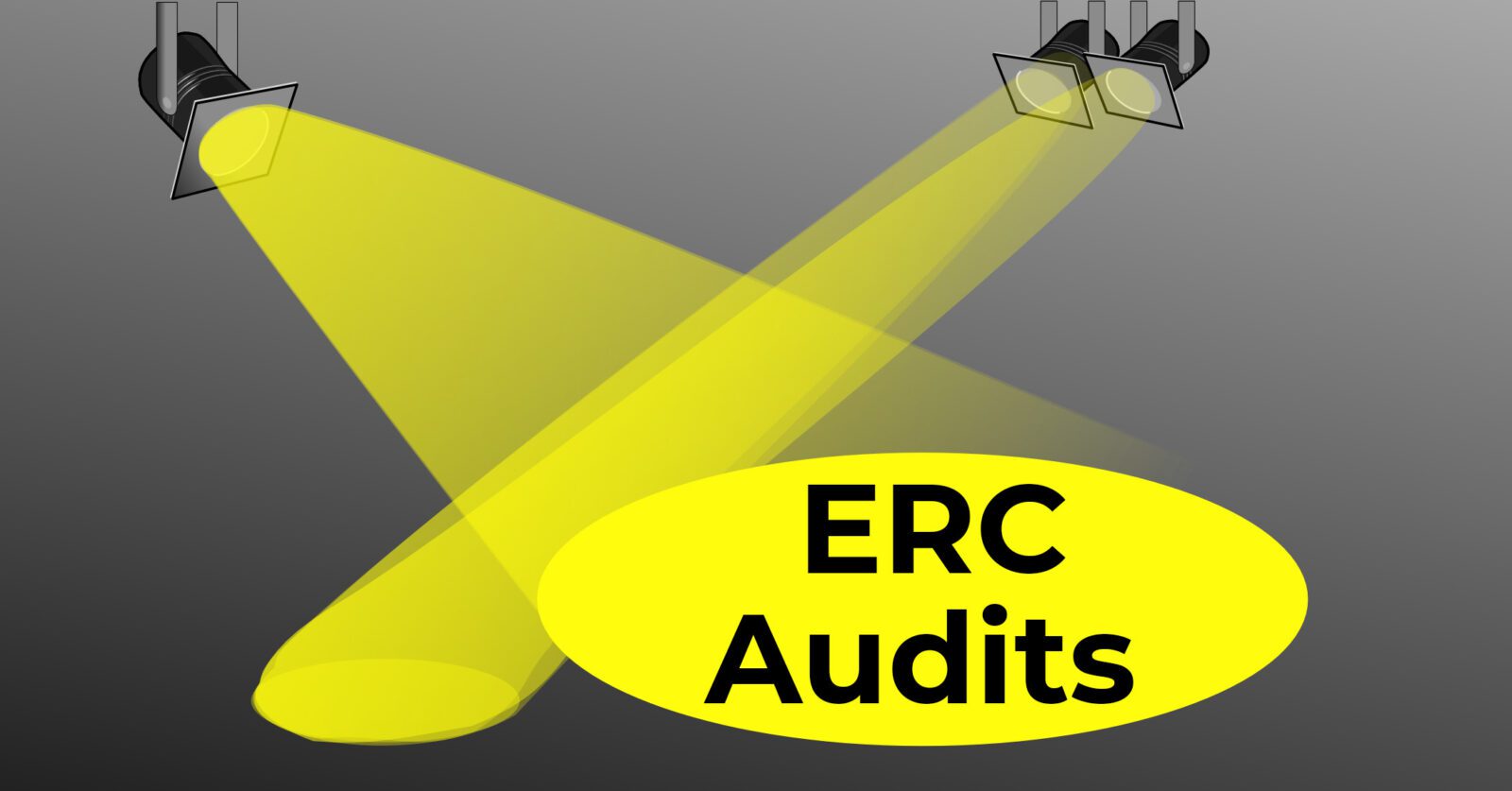
During the three years following its enactment as part of the CARES Act, the Employee Retention Credit (ERC) has received a significant amount of attention and press as a potential tax-savings strategy. As prior posts from this blog have highlighted, ERC scams are rampant. Promoters and credit mills are encouraging businesses to apply for the credit regardless of whether those businesses actually qualify for the credit. In response, the IRS has issued warnings regarding false claims and noncompliance pertaining to the ERC.
It should come as no surprise that the IRS has been looking into ERC claims as a result of the widespread misinformation revolving around qualifying for and claiming the credit. The IRS has issued Information Document Requests (Form 4564) to some taxpayers claiming the credit, and in some cases has also scheduled Payroll Tax Return (Form 941) audits.
Thanks to Twitter users sharing redacted copies of IRS correspondence regarding these audits, credit claimers have a glimpse as to what these examinations entail, and how best to prepare for them in the event that they find themselves subject to one. More notably, this can also help businesses and taxpayers claiming the credit know what information to document and maintain in supporting their claims of the ERC.
Payroll Tax Forms and Supporting Documents
The IRS requests copies of the filed Form 941s for the applicable periods that the credit was claimed. Additionally, copies of computation worksheets and reconciliation are requested pertaining to the ERC and associated adjustments for filed Form 941-Xs, Adjusted Employer’s QUARTERLY Federal Tax Return or Claim for Refund. The IRS also requests copies of State Unemployment Tax Returns for the applicable periods. If the taxpayer’s business is part of an aggregated group, the IRS wants to view copies of related entity consolidated employment tax returns and W-2 forms.
Employee Information
Along with a list of the employees whose wages were claimed for the ERC, the taxpayer will need to identify the employees on that list that are related individuals, if applicable. Related individuals include family members (parents, siblings, spouses, children, and in-laws) and majority owners of the business (own more than 50% of outstanding stock). Additionally, details regarding the date and amount of wages paid to each of the employees on that list are requested. If the taxpayer’s business is deemed a large employer (having more than 100 full-time employees in 2020 and more than 500 in 2021), documentation will need to be provided on how the employer determined the listed employees did not provide services.
Support for Eligibility
A taxpayer will need to provide documentation supporting their eligibility to take the credit. There are three types of documentation of which the taxpayer can provide one or more as applicable to meet this requirement. The first type of documentation requires support for when the taxpayer’s business fully or partially ceased their operations to be compliant with a governmental order requiring as such in response to COVID-19 or a supply chain disruption. A copy of the governmental order mandating a full or partial suspension of operations for the applicable period must accompany this documentation. The IRS specifies that recommendations from a governmental or other authority do not satisfy this requirement. An example of this would be recommendations from the Centers for Disease Control and Prevention (CDC).
The second type consists of documentation showing a significant decline in revenue and gross receipts for the period that the taxpayer claimed the ERC. For example, quarterly income statements can help show a comparison between the effected period(s) and those prior.
The third type is documentation that the business was a recovery startup business during the period that the business claimed the ERC. A business is considered a recovery startup when it began resuming business after February 15, 2020, and its average annual gross receipts is no more than $1,000,000 for the 3-year taxable period ending with the tax year preceding the calendar quarter the ERC is claimed.
Paycheck Protection Program (PPP) Loan Forgiveness
As part of the audit, taxpayers must provide documentation pertaining to whether they received PPP loan forgiveness. If the taxpayer had received PPP loan forgiveness, they must also provide a copy of the letter forgiving the loan from the loan provider, as well as documentation for the loan showing which employee wages comprised the PPP loans. The IRS is wanting to identify if there is any overlap between the employee wages comprising the PPP loans and employee wages for which the ERC was claimed.
Other Forms and Reports
In addition to payroll tax returns, the IRS requests copies of the tax returns for the business, all officers of the business, and all shareholders of the business, usually for the most recent tax year and prior. If the business was subject to any Federal or State income or employment audits, the IRS requests copies of all such prior audit reports as well.
Takeaway
While an audit can be an intimidating and cumbersome process, being prepared and having the relevant documentation readily available can help in making it smoother and less overwhelming. Having the knowledge of what documentation and support the IRS is looking at during an ERC audit may help taxpayers recognize any potential noncompliance beforehand so they can take steps to make corrections as soon as possible.
By Chris Korban, CPA
Tax Materials Specialist, U of I Tax School

Sources:
IRC §152(d)(2).
IRC §267(c).



